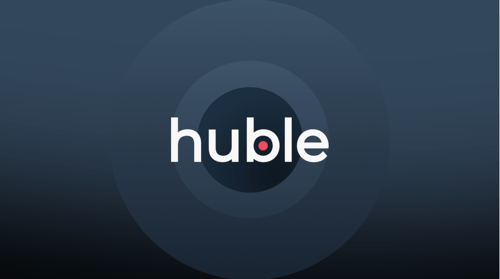In this blog post, Francesco Brizzo, SEM Lead at Huble Digital, delves into why you should consider a Growth Driven Design approach to your website build and explores the key differences between GDD vs traditional website design.
If you consume HubSpot’s content on website build and development, you might have heard about the GDD approach.
But what does GDD mean? GDD is an acronym that stands for Growth-Driven Design and it represents a new and disruptive approach to building websites.
The GDD approach aims to resolve the main pain points of traditional website design by creating a much more agile and flexible process. With GDD, you have more control over website builds and can spread the cost of the build over several months rather than paying one lump sum. This allows you to build your website in stages, make the best use of available resources and optimise your available capital – rather than spending months building one website that all goes live with one “big push of a button”.
However, while we won’t discuss GDD in detail (as it has already been covered by our HubSpot experts) you can watch the video below to learn more.
Watch > What is Growth-Driven Design?
Today I would like to focus on the reasons why you should adopt the GDD approach to building websites and why the traditional web design model no longer works.
Why traditional website design is broken
If you’ve ever participated in a website redesign or even a brand-new website project, you’ve most likely experienced the rollercoaster of emotions – ranging from excitement to fear – that comes with it.
But while some enjoy and relish the opportunity to redesign or build a brand-new website, most marketers can be a little bitter about it.
And that’s not because website redesign or brand-new build projects are boring – it’s because the traditional web design process is broken, and that can make the entire process frustrating.
For the sake of demonstrating why this process is broken, let’s imagine you’ve sat down with the board and key stakeholders and agreed with them to redesign your current website/build a brand-new one. What happens next?
Choose your team
First, you need to enlist a team that has the capabilities you need. Usually, this will be a mix of internal people (typically the marketing team) and experts from outside, i.e. a web design agency or a team of developers.
Allocate a budget
Item number two is the budget. The issue here is that there are still people who think that all they need to do is purchase a template and populate it with content to “complete” the website build. The reality is that there’s so much more than that, and the average website redesign for SMBs can cost – according to a HubSpot survey – between $15,000 and $80,000, and that’s not even for an enterprise-scale website!
Specify your timeline
Now you have to set your timeline.
On average, it takes from 3 to 6 months to build a new website and the only goal that is set in a traditional process is: “get the website live”.
So, you build a nice and tidy Gantt chart with hundreds of tasks and – at least – the same numbers of things that can go wrong over the three to six month period.
Then the project starts and despite you putting together a team, obtaining a budget, and planning when things should happen, the project gets delayed or goes over budget.
And that’s not the worst part.
When you finally hit the big red button and launch your brand-new website, soon you realise that it is not perfect and still needs a lot of work. You want to add more pages, edit existing ones, change templates – there’s a neverending list of things you want.
The problem with traditional website design is that it assumes that after everything is done, the website is perfect. You could have the best designers and an unlimited budget and the project could still fail.
There are several issues with traditional website design that make it risky:
- The large upfront cost (lump sum)
- The immense amount of dedicated time and resources it requires
- The marketing team often focus on the new build exclusively, doing little on other projects.
- The long-term deadlines
- No visibility of how the website – once built – affects the business’ bottom line
- A lack of internal communication, which ultimately results in a website that is not in line with the business’s needs
To sum up, there are many things which can cause a website project to go wrong, and in truth, you can’t afford it – not with a traditional approach. Your website is your first and best marketing asset and salesperson. It’s also the first place where people go to find out more about your business and it works 24 hours a day.
Why is all of this important?
Well, how important your website is to your business? Think about what would happen if your website disappeared tomorrow and how that would affect your business’s growth.
You also need to think about how often your website experiences technical issues and when content needs to be updated and/or optimised to meet the needs of visitors.
And, of course, what happens when you add new products or services to your website? You need to update your content and propositions to reflect these changes!
If you run through all these questions you will agree with me that traditional website design is broken, as it assumes everything is “perfect” once the website is live. Your website is crucial in generating new business and therefore fuelling your growth. Fortunately, GDD helps to ensure that and keeps your website in its best shape!.
GDD vs. Traditional web design differences
Project stages
GDD has three stages:
- Developing a strategy
- Building a launch-pad website
- Continuous improvement
Developing a strategy
In the strategy phase, you develop a thorough understanding of your target audience and define the requirements of your new website.
Building a launch-pad website
In the launch-pad phase, you build the first iteration of your website and put it live as quickly as possible. You then A/B test it to understand current and future requirements, adjusting your previous assumptions with live data.
Continuous improvement
In the continuous improvement phase, you review your website wish list and requirements periodically to make sure everything is always up to date. This is in direct contrast with traditional website design where you jam-pack your website with features without identifying what it is you truly need. The result is that you end up with a cumbersome website with components that are ditched and never improved until you decide to redesign your website years later.
The main benefits of a GDD website build
Customer-centric
GDD takes a customer-centric approach to building websites – .you define your audience, your market, and the individual habits of users before translating them into buyer personas. These are then used to build a website that caters to the needs of your ideal prospects!
Traditional website design, on the other hand, often does not even use audience research and, in many cases, is just self-referenced, based on the internal view of the market.
Goals orientated
GDD goals are SMART (Specific, Measurable, Attainable, Relevant, Timely) and will help you to refine some fundamental assumptions about your audience, market, business, value proposition, and website. Furthermore, unlike traditional website design, GDD website builds have several short, medium and long-term goals, ensuring your website meets all the requirements.
Fit for the business
As traditional website design doesn’t take into account the key business priorities – and instead focuses on rebuilding the website in its entirety, it’s often unfit for the business as it’s not designed based on what will deliver the most value.
Data-driven
GDD sees your website as a living and constantly evolving asset that adapts to your company’s needs. This is made possible by the continuous improvement phase – from day one, you will start collecting data on your website, analysing its performance and using that information to make data-driven decisions on what needs to be changed or improved.
Cost-effective
A traditional website build can cost between $15K and $80K, which is usually delivered in lump sums. GDD, however, gives you more control over costs as you spread the cost over a 12-months rather than 3 (which is what you would expect for the average website project).
This not only makes it much easier to manage financially, but it also makes the investment less risky as you can go live with a smaller phase 1 website (the launch-pad) and start measuring your ROI right away.
Delivered on time
The traditional website design is made of long-term deadlines while GDD timelines are shorter and flexible. Also, as the project is delivered in stages, it’s much easier for the team to focus on what needs to be done as a priority, and go live with it as it’s ready. No more delays.
Hopefully I have managed to convince you to leave the old website design approach behind and embrace GDD.
As HubSpot suggests: Let’s transform the world of web design together.
If you want to find out more about how you can develop a lead-generating website using Growth-Driven Design, why not talk to one of our consultants to learn how we can help you?
We’ve helped businesses like yours to transform their websites into lead-generating machines using Growth-Driven Design, and we can do the same for you.










-3.png?width=500&height=320&name=Matt%20-%20imagery%20bank%20(8)-3.png)

